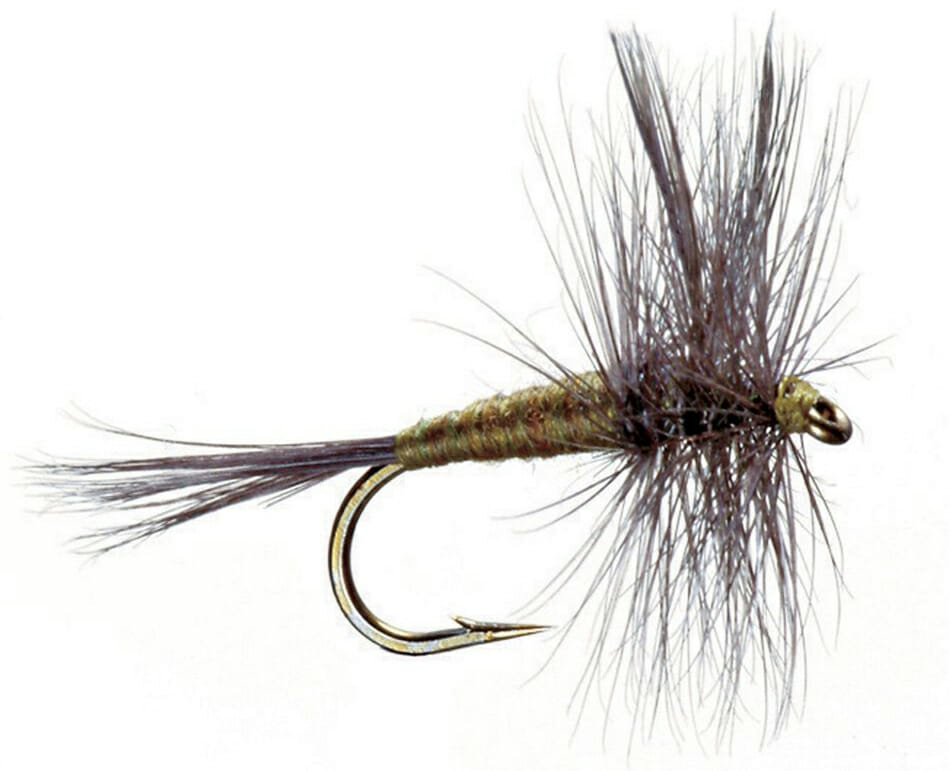Winter Fishing Tips from Colorado Parks and Wildlife
Winter is right around the corner, and river anglers in Colorado will soon be forced to fish tail-water fisheries that provide steady flows throughout the winter. Now is the time to get your last fishing trips in at your favorite small creeks and slow-flowing tributaries.
Rivers and Creeks
Many waters throughout the state are still providing excellent dry fly fishing opportunities on mid-sized (#14 – #18) caddis and blue-winged olive patterns. Dropping a small midge nymph (#20 – #22) off the dry fly is producing fish during the warmer hours of the day. As the blue-winged olive hatches begin to thin out going into mid-November and December, expect the fish to start focusing their diet on small midge adult and nymph patterns. There is no need to start fishing before the sun has warmed the water, but the fishing will remain steady in the evening hours until sunset.
Focus on fishing deeper holes with slow-flowing runs as the fish will start congregating to these areas to conserve energy. The fish will not travel far to bite your fly this time of year due to their slower metabolism, so be sure to cover every section of the run before moving on. If you are not catching fish in an area that looks productive, try changing your fishing position, use a smaller indicator, or add more split-shot to your line before switching flies. If these changes do not produce bites, try using smaller fluorocarbon tippet (6X – 7X) matched with a smaller fly.
However, do not end a day on the water without also trying large nymph patterns (#8 – #12) such as black and golden stoneflies, San Juan worms, eggs, and wooly buggers. To prevent spooking fish, winter anglers should approach runs from downstream with stealth and should avoid entering the water near the good areas. The low and clear water conditions, along with the limited areas to fish during the winter months, will cause the fish to be more aware of their surroundings due to daily fishing pressure. Catch and release anglers should be aware that the fish take longer to recover during the winter months, and the fish should remain in the water as long as possible. This means dealing with cold hands for extended periods or preparing a method to safely release the fish, including using catch and release gloves or using your fishing net to revive the fish underwater.
Barometric Pressure
Most anglers are aware of the impact weather conditions, such as temperature and wind, can have on fishing success. But what many anglers are unfamiliar with is barometric pressure and how/why it can affect fishing conditions. Barometric pressure is the pressure exerted by the weight of air in the atmosphere on Earth. This changes everything from the water itself to the fish inhabiting that water. By understanding how barometric pressure works, you will have an idea of whether the fish are likely to be biting. A fish can sense pressure through its air bladder. Species with larger bladders, such as trout, are more affected by barometric changes. When there is a drop in pressure, there is less force exerted on their bladder. This causes the bladder to expand to compensate for the lack of pressure. This makes the fish uncomfortable and causes them to become less active and move lower in the water column to absorb extra gas into their bladders to relieve some of the discomfort.
As for high pressure, the fish are much more comfortable, so they move more freely within the water column and feed more actively. Keep in mind that bait fish are also affected by barometric pressure. Low pressure will cause the bait to hold deeper and become less active. This makes for poor bait. You can always check barometric conditions and forecasts online, or purchase a barometer at a local hunting store. They are relatively inexpensive. As with all weather conditions, keep in mind that they are only indications of how the fish will be behaving, and not one hundred percent certain.


